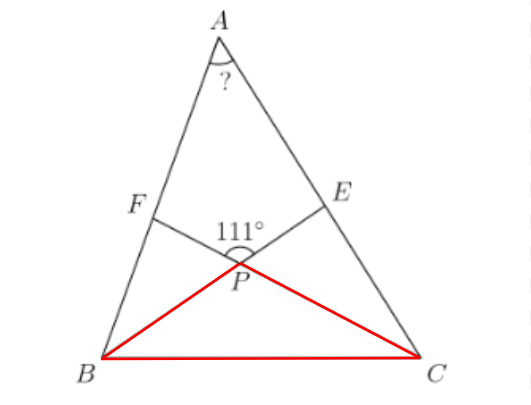Dont be intimidated! You don't even need to figure out the exact angle measures of ABC and ACB! Just find the sum of their angle measures. (You may need to scroll horizontally)

\(\text{Triangle ABC's angles add up to 180. And since angle ABC and ACB are bisected. We can assign them values }\frac{1}{2}x\text{ and }\frac{1}{2}y\)
\(\text{We draw triangle PBC as shown in the image in red}\)
\(\text{Due to the Vertical Angle Theorem, angle P in triangle PBC is 111}\)
\(\text{Since the angle measures of PBC sum up to 180. We can make the following equation}\)
\(\frac{1}{2}x+\frac{1}{2}y+111=180\)
\(\text{Now we solve the equation for x + y and get }x+y=138\)
\(\text{We solved for x + y, this means we just solved for the SUM of the angle measures of ABC and ACB}\)
\(\text{Since the angle measures of triangle ABC sum up to 180, and we know that the sum of two angles is 138.}\)
\(\text{We can figure out the third angle with the following equation. }128 + n = 180\rightarrow{n}=\boxed{42}\)
.